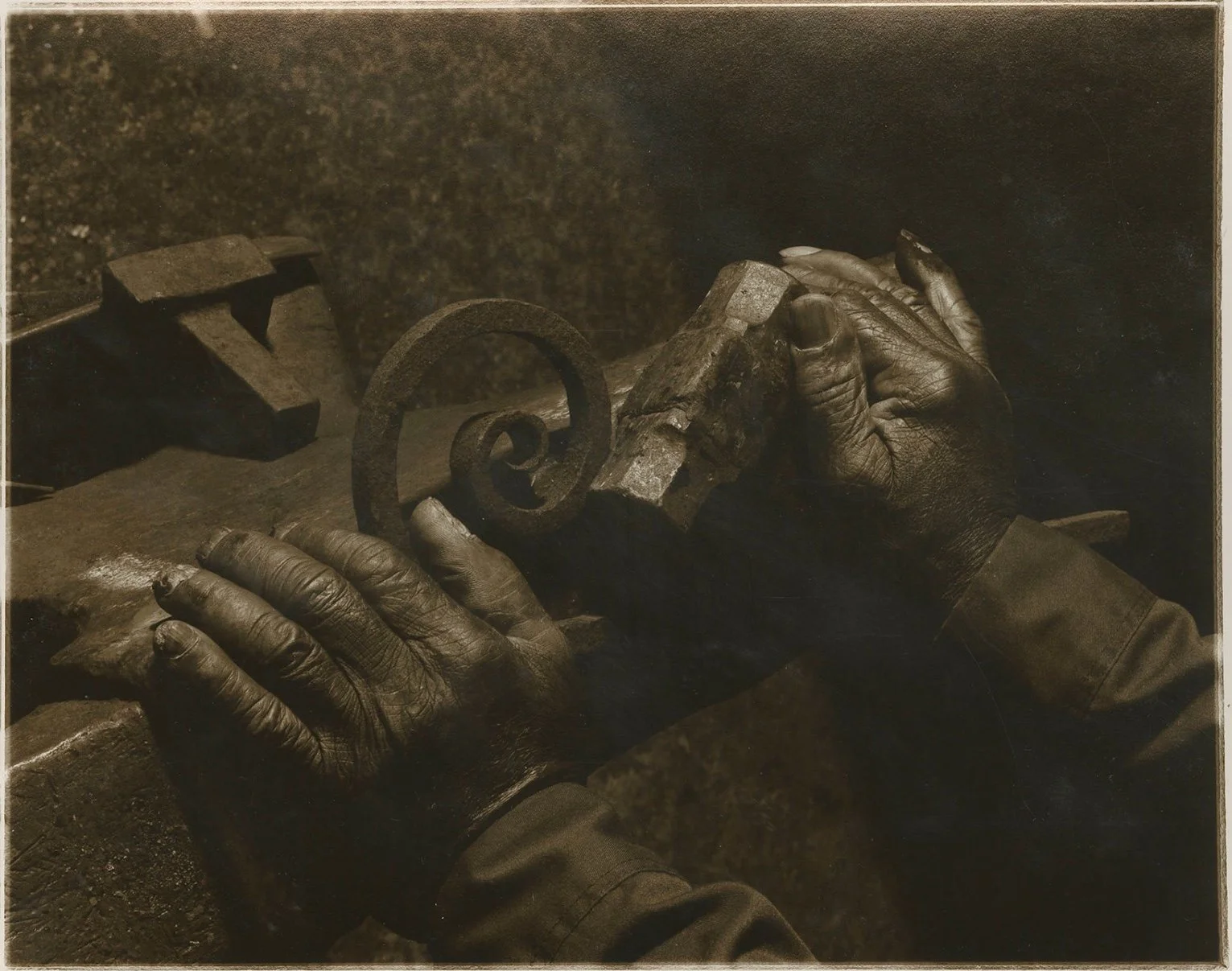Keeper of the Gate: the Ironwork of Philip Simmons
This Black History Month, we’re focusing on the contributions of Black and African-American people in Charleston’s history: we believe their excellence, achievements, and ingenuity is worth highlighting more than their suffering. While we want to acknowledge the historical contexts of their lives, we think it’s important to highlight greatness for its own sake.
To that end, we’d like to share the story and legacy of Philip Simmons, a Black craftsman whose handiwork contributed to the distinctive charm of historic downtown Charleston. Born on Daniel Island in 1912, he was raised by his grandparents until he was 8, when he was sent to Charleston to live with his mother and attend school. As a child, Simmons became fascinated by the workers in his neighborhood near the harbor, where smiths, coopers, pipefitters, shipwrights, and other craftspeople serviced the ships and waterfront businesses. The din of the blacksmith shop caught his attention when he was thirteen, and Simmons soon became an apprentice of blacksmith Peter Simmons (not related). By the time he turned eighteen, Philip partnered with Peter to run the blacksmith shop, and their utilitarian skills served and built the city: in the 1920s and 1930s, blacksmiths were mostly concerned with practical items such as nails, horseshoes, and structural hardware. Peter taught Philip how to create decorative wrought iron works, and this blend of practicality and artistry appealed to the younger Simmons.
The 1930s also saw a new awareness of and investment in Charleston’s preservation of its architectural history and aesthetic heritage. The city adopted a historic preservation ordinance - the first of its kind in the United States - in 1931, establishing an “Old and Historic District” downtown and creating a Board of Architectural Review. This group oversaw alterations to historic structures, and with the new focus on preservation, there was a surge of requests for repairs and restoration on existing ironwork. Simmons found his opportunity to work on older pieces and create new, more decorative works, and his popularity grew by word of mouth as patrons praised the quality of his work.
Photograph courtesy Avery Research Center at the College of Charleston
By the 1950s and 1960s, Simmons’ work could be found all over Charleston, from private residences in the historic district, to prominent churches such as the First Baptist Church, to historic houses like the Rhett House and the Christopher Gadsden House. Simmons became a well-known artisan of Charleston, and went on to earn recognition from the National Endowment for the Arts, a lifetime achievement award from the SC State Legislature, a commission from the SC State Museum, an honorary Doctorate of Fine Arts from SC State University, and the creation of the Philip Simmons foundation by his home church, the St. John’s Reformed Episcopal Church, which developed a commemorative garden in his honor.
Simmons retired from most blacksmith work in 2005, though he continued to welcome school groups and visitors to his home shop to learn about his experiences and his craft. He passed away in 2009 after a long, full life, and his legacy survives in his work, which continues to contribute to the beauty of historic downtown Charleston.
On our tours, we want to share and highlight the little details throughout the city that speak to its history and show the love and dedication of their creators in their beauty, practicality, and durability. Philip Simmons’ work survives today as remarkable examples of handicraft, in which something was made to be not just useful, but also beautiful. We’re excited to share his work and legacy, and hope that it enriches your experience of Charleston.
Join us on a walking tour to discover historic Charleston - and spot some of Simmons’ beautiful ironwork - at this link.
Learn more about where you can see some of Simmons’ work here.
. “ Photograph of Philip Simmons’ hands holding hammer and scrolled piece of iron.” Lowcountry Digital Library, Avery Research Center at the College of Charleston, 19901999.
. “ Photograph Philip Simmons standing next to a gate.” Lowcountry Digital Library, Avery Research Center at the College of Charleston, 19901999.
All other photographs by Tyler Page Wright, 2022.












